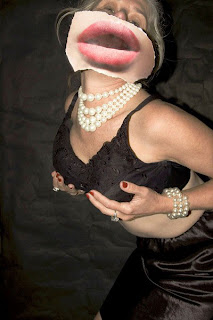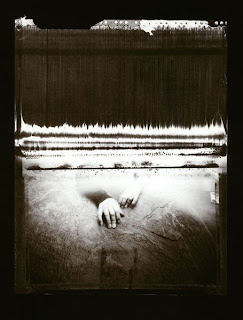Reading a review by Richard Kalina in the September Art in America, I come across this passage:
In 1946 an unnamed male critic (not Greenberg or Rosenberg) reviewing Louise Nevelson's first major exhibition writes, "We learned that the artist was a woman, in time to check our enthusiasm. Had it been otherwise, we might have hailed these sculptural expressions as by surely a great figure among the moderns." And Lee Krasner speaking of Hans Hoffman, the leading teacher of his day, said, "I can remember very clearly his criticism one day when he came in and said about (my) painting, 'this is so good you would not believe it was done by a woman.'"
Ouch.
Nevelson also studied with Hoffman, in the early 30s, when his school was in Munich and before he emigrated to NY. She's known to have said, "I wouldn't marry God if he asked me." Krasner married Pollock which might have been like acquiescing to marrying god, a god, and see where that got her. She lived and worked 30 years after him, yet is mostly remembered as his wife.

Jackson Pollock with Lee Krasner in the background, in 1955.

This is a mid-career Krasner, Thaw, post-Pollock, 1957.

Nevelson in signature fur in a portrait by Cecil Beaton.
Nevelson had a good self-image. "I always thought, bluntly, that I was a glamorous, goddamn exciting woman," she said. "I wanted to have a ball on earth." And she did.

Nevelson postage stamps.
Knocked Out
Most women aren't so lucky and get knocked around—still, into this century—by the prevailing misogyny. It must be bred in the bone, so deeply it is rooted. Only a few lucky ones escape deprecation by self or others. Age by age, it's the same old story.
In AiA there's also a piece on May Wilson who, in 1966, at the age of 61, moved to NYC to become an artist (like you do). Her husband trading her in for younger women was the kick in the pants she needed to launch herself onto the NY scene. She held salons at the Chelsea Hotel, hung out at the Factory, made art. Like Nevelson, she assembled, only her works were much more Pop: spray-painted platform-shoes with baby-doll heads, Pop. She also made collage. When her husband was cheating on her, she took to cutting up Playboy centerfolds. She made them into snowflakes or "doillies" as she called them. Pasted together, image overlay image. Must have been therapeutic.

This is one of a series of collages she made inserting her clowning mug shot into unlikely places. I suppose she was being a good sport about her old face. That's what they say, anyway, she was a card.
Invisible



These three are by Charlotte Niel. She's saying something different than Wilson with these bits of model beauty superimposed upon her own body. Something about illusion, maintaining it, playing with it, and questioning what's real. At what age do we start doing drag? Female impersonators. Gender impressionists.
These are part of a traveling exhibition of photos, self-portraits by women of a certain age—50 to 65—the Invisible Age, the title of the show. Curated by Jan Potts and Beth Kientzle who, in their statement, explain,
The timing is not precise. Women at around age 50 notice that something has changed. It happens slowly, almost imperceptibly. Heads no longer turn as we walk down the street, older or younger women are served first, the boss calls on others in meetings, few models in magazines or actresses in movies represent women our age. We have reached the invisible age. It lasts a decade or more, and around age 65, it changes again—we’ve moved into another stage of life where the fruits of our longevity are valued, and society can see us again.
The show, seen in Washington DC and Newton NJ, is now at Rayko Photo Center, SF. Most of the works explore the experience of being invisible or marginal and so are vague, obscure, remote. It is rather painful, this sinking from view—or as the subtitle of this photo suggests, Crawling Out.

Perseverance: Crawling Out, by Mary Ramain.
And then some are strikingly defiant in the face of all odds.

Amazon by Niki Berg.
Odds are, we're all going to die, men, women, animals alike. In the meantime though, to be seen is the thing, in our own light and worth. The blatant dismissal of women in the 30s (40s, 50s, 60s...) is an unspoken assumption today. The false premise still plagues us. I want to root it out. In myself and in the culture.
Question assumptions. Defy categorizations. Expand limitations. Good slogans. Add to the list. To Do.
Nevelson quotes from Louise Nevelson Foundation.
Pollock photo courtesy of Smithsonian Institute Archives of American Art.
Beaton photo courtesy of New York Times.
Wilson work on ArtNet.












